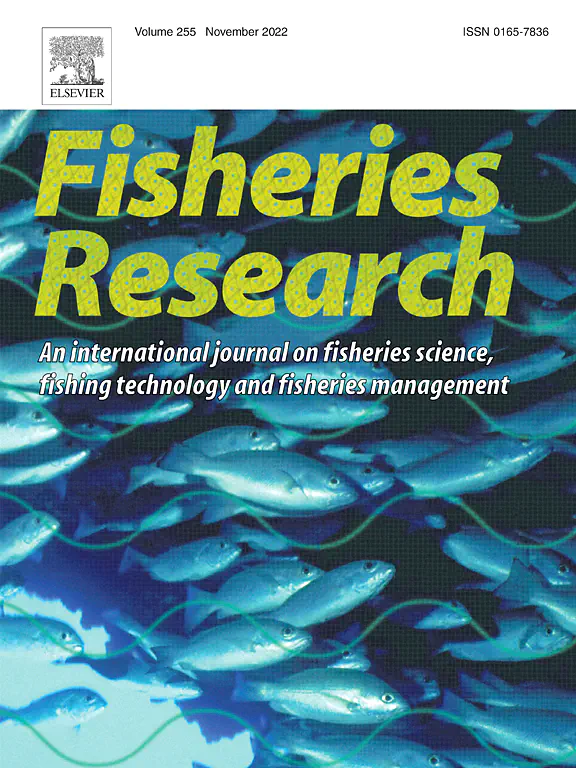Behaviour affects capture probability by active sampling gear in a cyprinid fish

Abstract
Animal behaviour interacts with various relationships within biota, and its variation among individuals may cause bias in behavioural research because of its impact on sampling efficiency. In this study, we simultaneously recorded fish behaviour during the reproductive season by passive telemetry and sampled a fish population using an active sampling method by boat electrofishing. A total of 1479 individuals of the cyprinid fish asp (Leuciscus aspius) were tagged, and their reproductive behaviour was recorded using passive telemetry systems in 2015–2020. We investigated whether capture probability was related to fish behaviour during reproduction (length of spawning, number of individual visits to spawning grounds, proportion of time spawning, arrival date and average daily arrival time). Overall, males were more likely to be captured than females (30 ± 4% standard error (SE) vs. 20 ± 3% SE probability) when present in the area. Traits favouring the odds of being captured differed between sexes and included the length of presence, proportion of time invested in spawning and average daily arrival time in males; in females, the capture probability was related to the length of presence and arrival date. This study suggests that even a large sample obtained using active gear may not represent the entire population’s behaviour because of behavioural-related bias in a population.